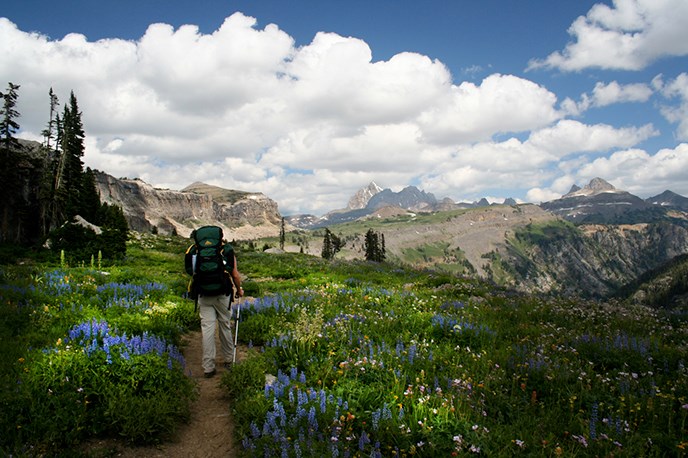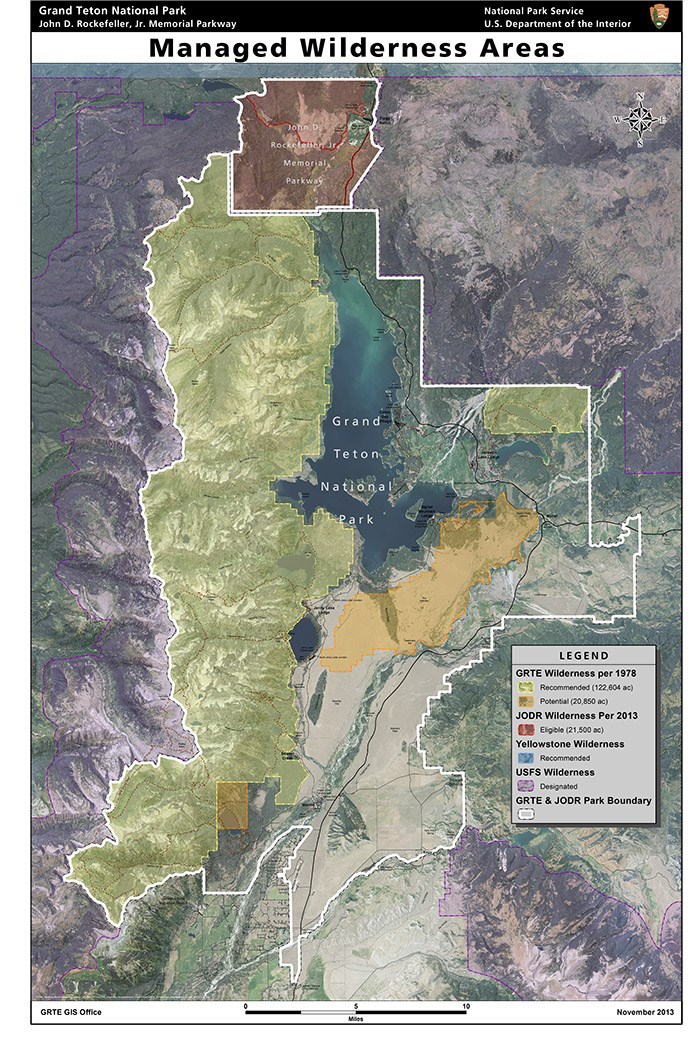
Wilderness, as defined in the Wilderness Act of 1964, is land "protected and managed so as to preserve its natural conditions and which generally appears to have been affected primary by the forces of nature, with the imprint of man's work substantially unnoticeable."
Wilderness is an area where the earth and its community of life are untrammeled by man, where man himself is a visitor who does not remain. Wilderness is land retaining its primeval character and influence, without permanent improvements or human habitation. Wilderness is an area protected and managed so as to preserve its natural conditions and which generally appears to have been affected primarily by the forces of nature. Wilderness is an area where the imprint of man's work substantially unnoticeable. Wilderness provides outstanding opportunities for solitude or a primitive and unconfined type of recreation. Wilderness areas are large, areas of at least five thousand acres, or are of sufficient size to be preserved in an unimpaired condition. Wilderness may also contain ecological, geological, or other features of scientific, educational, scenic, or historical value.
Wilderness Act of 1964
Grand Teton National Park has a special connection to the Wilderness Act of 1964. The idea that there should be tracts of land left in their natural state was core to the idea of national parks. This idea though is not unique to those who cherish national parks. Starting in the 1920s Arthur Carhart, Aldo Leopold, Robert Sterling Yard and others, began promoting the idea of a national wilderness preservation system. Others shared their vision, and in 1935 Leopold, Yard, Bob Marshall, Benton MacKaye and others formed the Wilderness Society with the goal of wilderness protection.
The Muries
Olaus Murie came to Jackson Hole in 1927 as a biologist with the Biological Survey (later the US Fish and Wildlife Service) to study its famous elk herd. He became involved in the Wilderness Society, accepting a council seat with the Society in 1937, and then being named its director in 1945. This same year Olaus, along with his wife Margaret "Mardy", brother Adolph, and his wife Louise, purchased what was to become the Murie Ranch in what is now Grand Teton National Park. Not wanting to work from Washington, the ranch became the families' home base and hosted many meetings of the Wilderness Society. In his work with the Wilderness Society, Olaus and his wife Mardy worked to establish a National Wilderness Preservation System and a number of wilderness areas, most notably what would become the Arctic National Wildlife Refuge.
The Muries, working with Howard Zahniser, who wrote the legislation which became the Wilderness Act, and others in the Wilderness Society finally saw the Wilderness Act introduced in Congress in 1956. The act was finally signed into law on September 3, 1964. Unfortunately neither Olaus Murie nor Howard Zahniser saw the legislation signed into law, each having passed away during the previous year.
Wilderness and Grand Teton National Park
Grand Teton National Park has no congressionally designated wilderness. Designated wilderness is wilderness designated by Congress and signed by the President. Grand Teton does have land that has been recommended for wilderness protection and added to the National Wilderness Preservation System. The park also has areas of potential wilderness, while land in the John D. Rockefeller, Jr. Memorial Parkway is eligible for wilderness protection. By National Park Service policy, recommended, potential and eligible wilderness is managed the same as designated wilderness. Grand Teton's recommended and proposed wilderness area are shown in the map below. For a larger version of this map, click here.
|
Last updated: February 8, 2024

